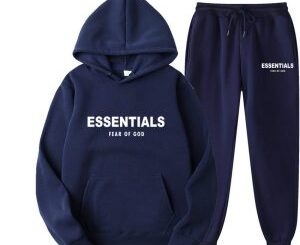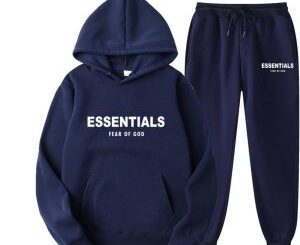The Enduring Appeal of Leather Jackets in Film Culture
Leather jackets have always been more than just pieces of clothing—they’re symbols of rebellion, coolness, and raw attitude. Since the early days of cinema, these iconic garments have played a crucial role in defining characters, creating memorable moments, and influencing entire generations of fashion lovers. When you think of your favorite movie characters, chances are at least one of them wore a leather jacket that instantly made them seem cooler, tougher, or more mysterious.
This article dives into the legacy of leather jackets in movies, exploring how they became cultural icons, how they shaped character identities, and why they continue to inspire real-life fashion trends even today. From classic Hollywood to modern blockbusters, the leather jacket has stood the test of time as the ultimate wardrobe staple for heroes, anti-heroes, and villains alike.
A Brief History of Leather Jackets in Cinema
The leather jacket’s cinematic journey started in the early 20th century, closely tied to real-world military and aviation gear. Originally designed for pilots in the World Wars to protect them from harsh altitudes, leather jackets were functional, rugged, and masculine. Hollywood quickly noticed their appeal, adopting them as the perfect costume choice for characters who needed to appear strong, daring, or adventurous.
One of the earliest examples is the classic 1930s aviation film Hell’s Angels by Howard Hughes. The pilots wore leather bomber jackets, emphasizing their bravery and camaraderie. It wasn’t long before Hollywood realized that these jackets added authenticity and edge to any character.
By the 1950s, the leather jacket truly exploded in popularity thanks to cultural icons like Marlon Brando in The Wild One (1953). His black motorcycle jacket, slouched posture, and brooding glare created the template for the “rebel without a cause.” Around the same time, James Dean further cemented the image of the rebellious youth in Rebel Without a Cause (1955), though he wore a red windbreaker—still, the vibe of “dangerous cool” was in the air, and leather jackets became associated with it forever.
The 1960s–70s: Anti-Heroes and Attitude
As cinema evolved, so did the role of the leather jacket. The 1960s and 1970s gave rise to gritty anti-heroes and morally ambiguous characters who wore their leather like armor. Think of Steve McQueen in Bullitt (1968), whose minimalist black leather jacket matched his no-nonsense, icy demeanor. Or Peter Fonda and Dennis Hopper in Easy Rider (1969), cruising across America in fringed leather jackets, representing freedom, counterculture, and defiance against the establishment.
These films didn’t just feature leather jackets—they used them to say something about the characters and the world they inhabited. A worn, beaten-up jacket might suggest a life on the run or a refusal to conform. A sleek, tailored one could indicate a calm, controlled, but dangerous professional.
The 1980s: From Rock Stars to Action Heroes
If the ’70s were about anti-establishment rebellion, the 1980s took the leather jacket and turned it into a larger-than-life icon of action and power. Think of Harrison Ford as Indiana Jones. His brown leather jacket, paired with a fedora and whip, created an instantly recognizable silhouette that suggested rugged adventure and old-school heroism.
Meanwhile, the rise of cyberpunk aesthetics brought new interpretations. In The Terminator (1984), Arnold Schwarzenegger’s black leather motorcycle jacket became synonymous with an unstoppable, machine-like killer. It was menacing, sleek, and cold—perfectly matching the film’s dystopian tone.
In Top Gun (1986), Tom Cruise’s bomber jacket made military aviation cool again, inspiring a new generation of fans to adopt the style. Similarly, Michael Jackson’s Thriller music video (1983) featured a bright red leather jacket with unique design lines that would be copied endlessly in pop culture.
In the middle of all this cinematic history lies the special significance of <a href=”https://zingapparel.com/collections/movie-jacket-collection-for-men“>Film Leather Jackets,</a> a term that reflects not just the clothing itself but the mythos built around it. These jackets transcend costume design—they’re a storytelling tool that shapes how audiences perceive characters. When a director chooses a leather jacket for their hero or villain, they’re making a deliberate choice about how to communicate personality, mood, and even the movie’s overall themes.
The 1990s: Edgy Realism and Grunge
By the 1990s, leather jackets had become almost too popular, but filmmakers still found new ways to use them. Movies like The Crow (1994) turned the leather trench coat into a gothic, supernatural uniform. Brad Pitt’s red leather jacket in Fight Club (1999) made an ironic, anarchic statement that perfectly captured the film’s critique of consumerism and masculine identity.
Even outside the action genre, leather jackets added grit and authenticity. Quentin Tarantino’s characters in Pulp Fiction (1994) and Reservoir Dogs (1992) wore black suits or leather jackets that suggested danger lurking under slick professionalism. The jackets weren’t just props; they were character cues.
The 2000s–Present: Legacy and Reinvention
In the 21st century, film costume design has continued to reinvent the leather jacket while honoring its roots. The Matrix trilogy made long leather coats iconic in the cyberpunk genre. Superhero movies like X-Men featured custom-designed leather suits that added realism and edge to comic-book characters. Even today’s Batman movies showcase various takes on tactical leather armor that combines style and function.
More recently, Mad Max: Fury Road (2015) returned to post-apocalyptic grit, with weathered leather jackets that looked lived-in and brutal. Meanwhile, streaming shows like Stranger Things have leaned into 1980s nostalgia, reviving classic bomber jackets and biker styles for a new generation.
Why Leather Jackets Work So Well on Screen
What is it about leather jackets that makes them so cinematic? Part of it is their physical properties: leather has a weight and texture that makes it feel substantial on-screen. It moves in interesting ways, catching light and shadow, making even simple scenes more visually compelling.
Leather also conveys immediate meaning. It suggests toughness, rebellion, danger, and independence without a single line of dialogue. When a character shrugs on a leather jacket, we instinctively know something about them. It’s shorthand for attitude.
Additionally, leather jackets age well. A scuffed, worn-in jacket tells a story of its own, hinting at adventures, fights, or years on the road. This lived-in quality can make a character seem more authentic and layered.
Real-World Fashion Influence
Of course, the impact of film leather jackets doesn’t stop at the edge of the screen. Fans constantly try to replicate their favorite movie looks. After The Wild One, motorcycle jackets surged in popularity. Top Gun inspired bomber jacket sales. The Matrix led to a wave of black leather trench coats in the early 2000s.
Fashion designers know this and often deliberately reference famous movie jackets in their collections. Even if you’re not buying a direct replica, you’re likely wearing something inspired by film. The dialogue between cinema and fashion is ongoing and dynamic.
Conclusion: More Than Just a Jacket
Ultimately, leather jackets in film are more than cool outfits—they’re storytelling devices that help audiences instantly understand characters and themes. Whether it’s a scrappy rebel, a stoic hero, a stylish anti-hero, or a futuristic assassin, the leather jacket is often the perfect choice to communicate power, defiance, and style.
When we talk about “Film Leather Jackets,” we’re talking about decades of movie history woven into a single garment type. They’re cultural symbols that connect generations of film fans, reminding us that great style isn’t just about looking good—it’s about saying something meaningful. From vintage classics to cutting-edge designs, the leather jacket remains one of cinema’s most enduring and versatile fashion statements.






